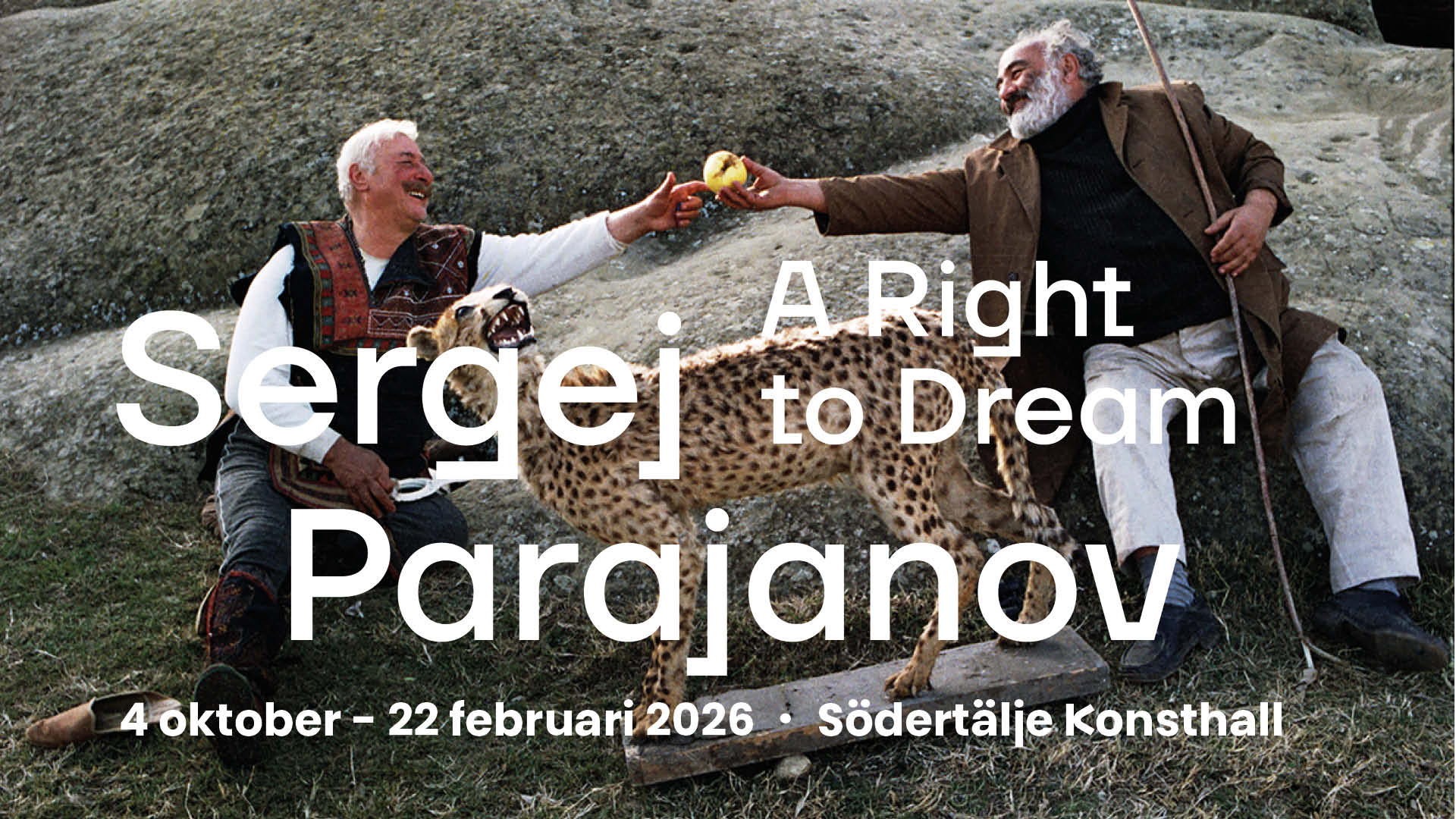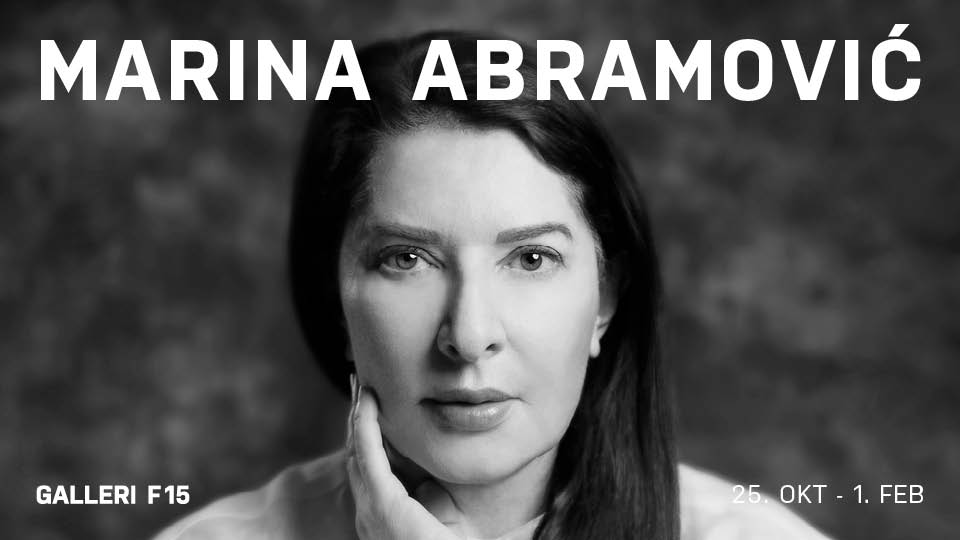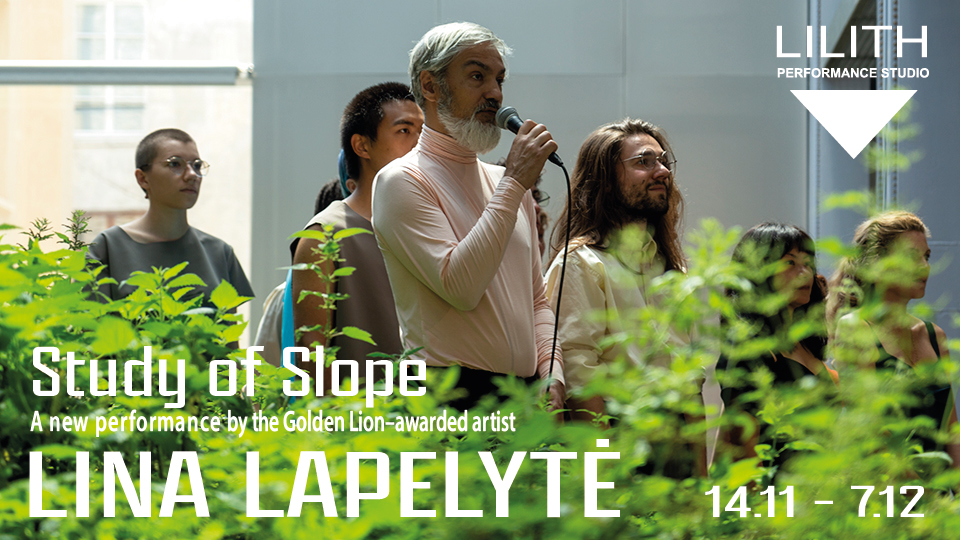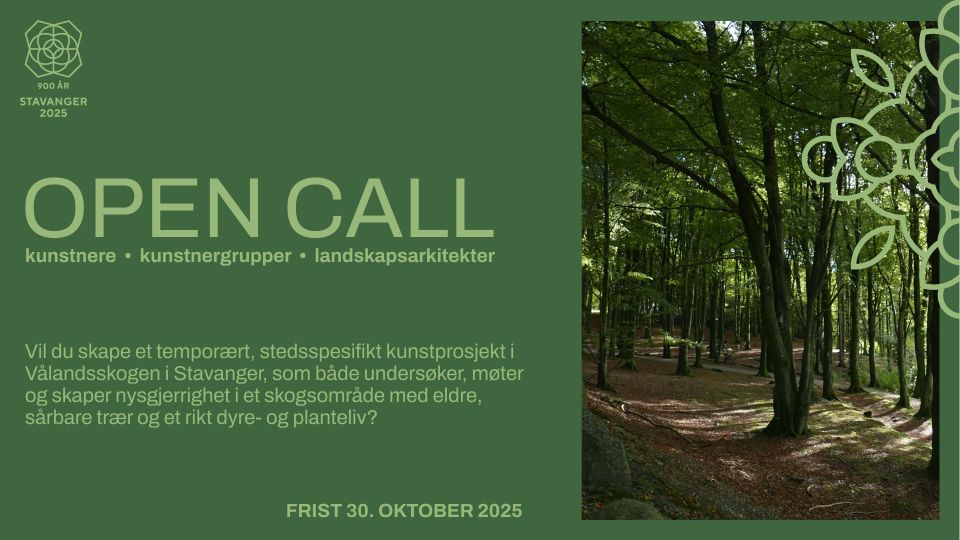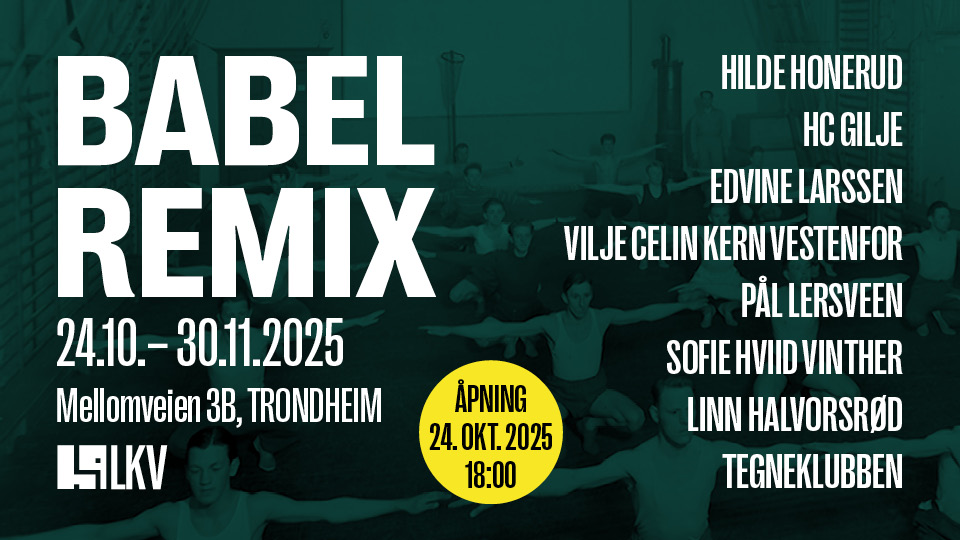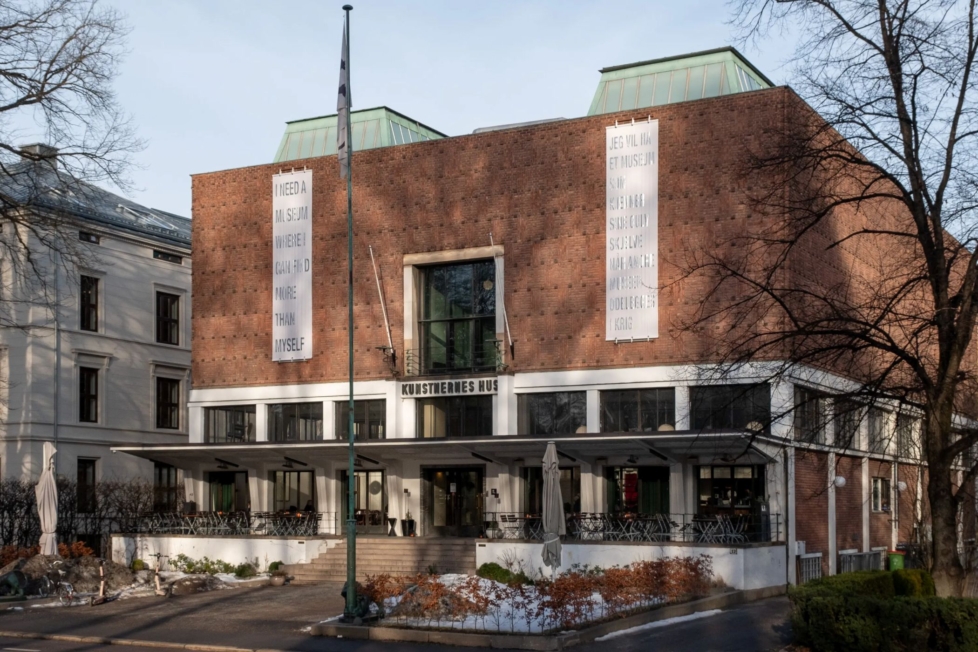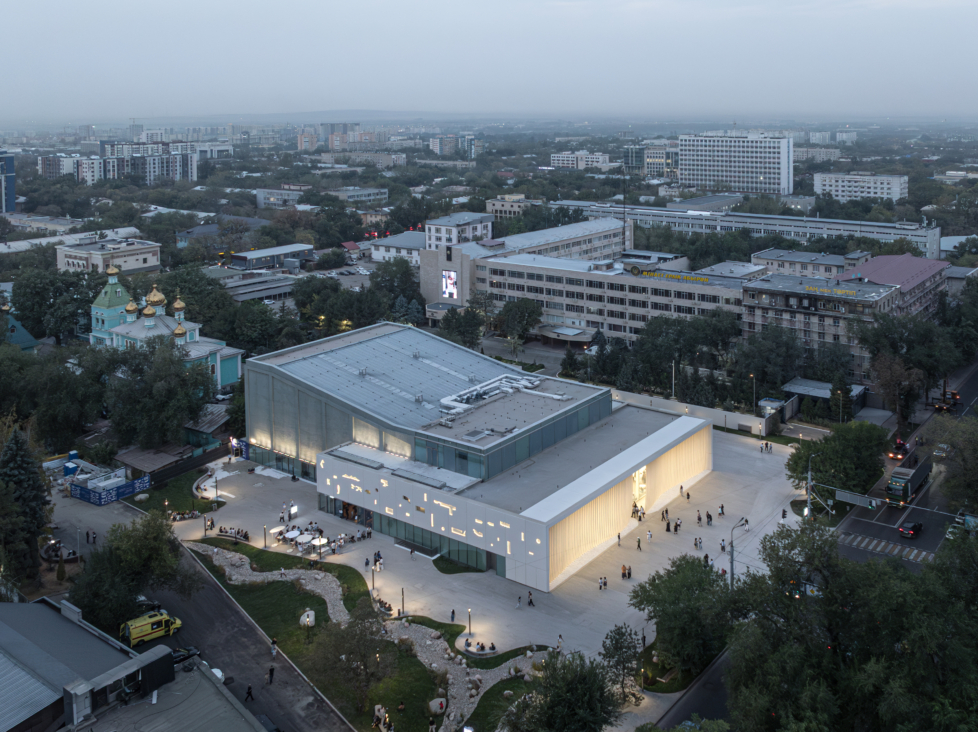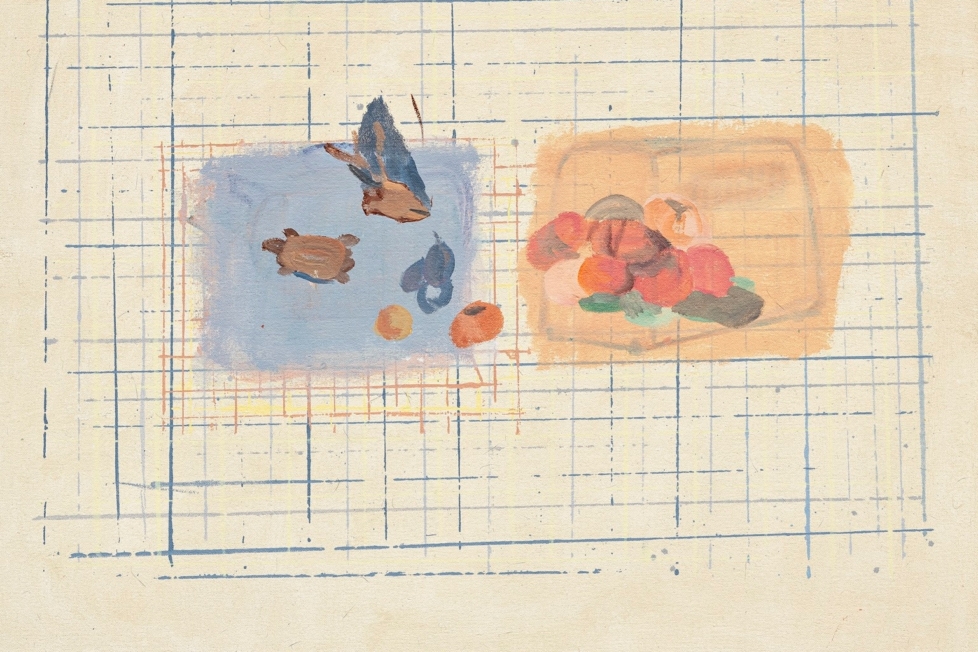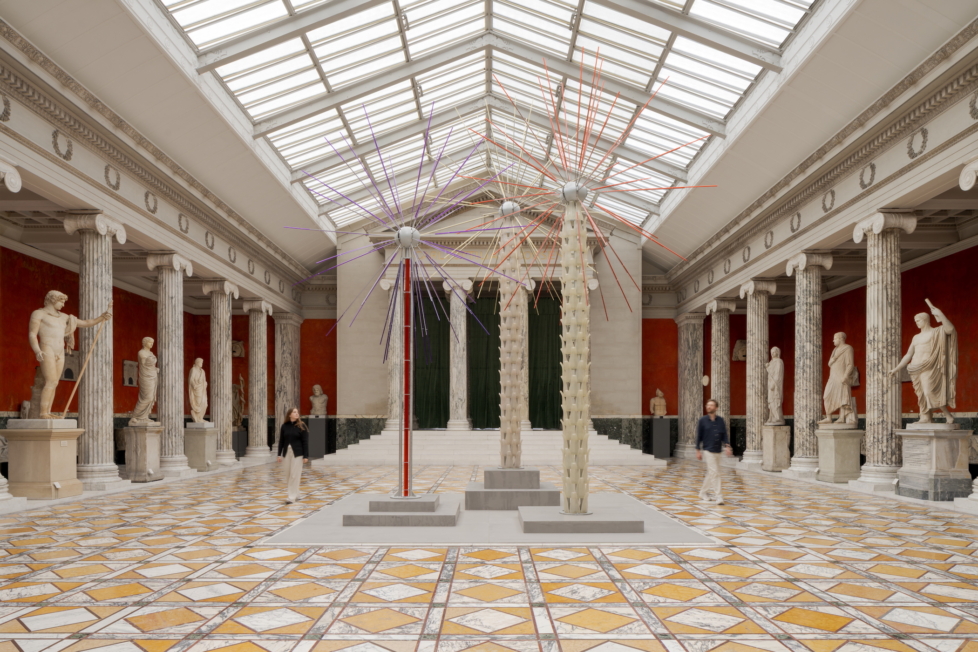
A metallic screech cuts through the room as Selma Selman’s sculpture is activated by a motor. Flower of Life (2024) comprises a large construction grab installed like a monstrous flower stretching towards the ceiling at MoMA PS1, an affiliate of the Museum of Modern Art in New York. The ‘petals’ open and close at irregular intervals, and the jarring noise sends the guards out of the exhibition space each time it begins. (Anyone who has worked in a gallery knows that even a gentle sound loop can tip into sonic torture given long enough exposure – so they’re more than forgiven.)
The Gatherers features a wide-ranging group of international artists, several of whom have roots in the former Soviet Union. According to curator Ruba Katrib and her team, these artists continue a well-established tradition: searching among society’s overlooked and discarded surplus materials. Scrap metal, debris, and industrial waste function as material witnesses to the systems that shape our daily lives, from digital and urban infrastructures to global supply chains and a shifting geopolitical order. The gaze that emerges in The Gatherers is often cold and clinical, yet curious. Mystical and cosmological elements are also present, alongside a handful of more confrontational pieces, most notably Selman’s metal claw.
The artworks are produced using a range of techniques and often incorporate unidentifiable materials (“mixed media” appears frequently on the checklist). In other words, by virtue of their newly acquired status as art objects, they operate at the intersection of scrap and luxury commodity. One exception is Selman’s second work, Nail (2025), in which the object itself holds intrinsic value. Here, Selman has engaged in a form of contemporary alchemy together with her Romani relatives in Bosnia, who make a living from scrap metal recycling. While recycling is a relatively recent endeavour in many Western majority societies, Roma communities have been collecting scrap metal for over a century. Selman has extracted gold from the central processors of discarded computers (also included in the exhibition as the piece Motherboards, 2025). The precious metal has been melted down into a single gold nail, which the artist has hammered into an otherwise bare white wall.

A two-channel video by Georgian artist Tolia Astakhishvili and French artist Dylan Peirce, so many things I’d like to tell you (2025), leads viewers into a scanner-like machine that documents an endless succession of objects and knick-knacks: office supplies, a photograph of a dancing couple, a dried stain. The equal treatment of these vastly different things may be indicative of a mechanical, non-human perspective that dissolves the hierarchy between the depicted objects. British artist Nick Relph has used a portable scanner to produce a series of 1 to 1 images of surfaces in cities such as New York and Rome, with a particular focus on signs marked with the word “gas” – for instance, in the work Chaos (85) (2025). With the scanner’s limited field of capture and the choice of subject matter, the artist appears to explore the thresholds between control and formlessness.
Congolese artist Jean Katambayi Mukendi has created a ten-metre-wide drawing, Doors (2023). This monumental work depicts New York’s subway system, where connections between a carriage, a power station, bones, and creatures resembling rats and beetles are organised into a cosmological flowchart of sorts.
Two distinct forms of curatorial framing can be identified in The Gatherers. Some works are positioned to operate discursively, as biennial-ready arguments, while others are allowed to reside within a more open interpretive space. Viewers are not given direct access to the logic through which the artist has produced the work; instead, the piece is allowed to speak for itself, regardless of its underlying ideas. Chinese artist Zhou Tao’s video The Axis of Big Data (2024), which depicts scenes from rural life around a data centre in Guizhou, China, falls into the former category. American artist Samuel Hindolo’s painting Galgenberg Hill (2024) belongs to the latter. Hindolo’s work depicts a cityscape with an amorphous figure seated on a stairway leading up to a pale blue, gaseous sky. The painting produces a kind of linguistic excess, while simultaneously leaving the sense that language falls short.

In Emilija Škarnulytė’s video installation Burial (2022), everything initially appears unfamiliar. We see out-of-focus footage of an animal-like figure wandering through a landscape, a pixelated forest, and a close-up of a python shedding its skin inside the control room of the Ignalina nuclear power plant in Lithuania, the artist’s native country. The video is in black and white, with the exception of a sequence of atomic mushroom clouds – a reminder of the discovery that made it possible for humanity to annihilate itself at the press of a button. At first, the video seems to draw on the apocalyptic register often associated with art that addresses climate destruction and overconsumption. But Burial complicates this initial impression: it is rather concerned with the many invisible forces – geological, ecological, and political – that shape our lives.
Georgian artist Andro Eradze’s video Flowering and Fading (2024) suspends gravity itself: various artefacts and pieces of furniture in the home of the late Soviet costume designer Simon Virsaladze (1909–1989) float upwards as if weightless, and rays of sunlight seem to move away from the earth, rather than descend upon it. No humans are in sight. As in several of the videos in The Gatherers, the soundtrack is heavy and drone-like – a kind of galactic rumble that spills over into the other works in the exhibition. The hidden infrastructures thematised by the show are most clearly dramatised through sound. The exhibition invites us to observe the inside, the familiar, from an external and estranging perspective, so the affective force of the many distinctly eerie soundtracks, combined with Selman’s shrieking flower, comes across as somewhat redundant. One problem with observing the familiar from an imagined outside is that it creates a sense of distance rather than relevance in relation to the themes at hand.

